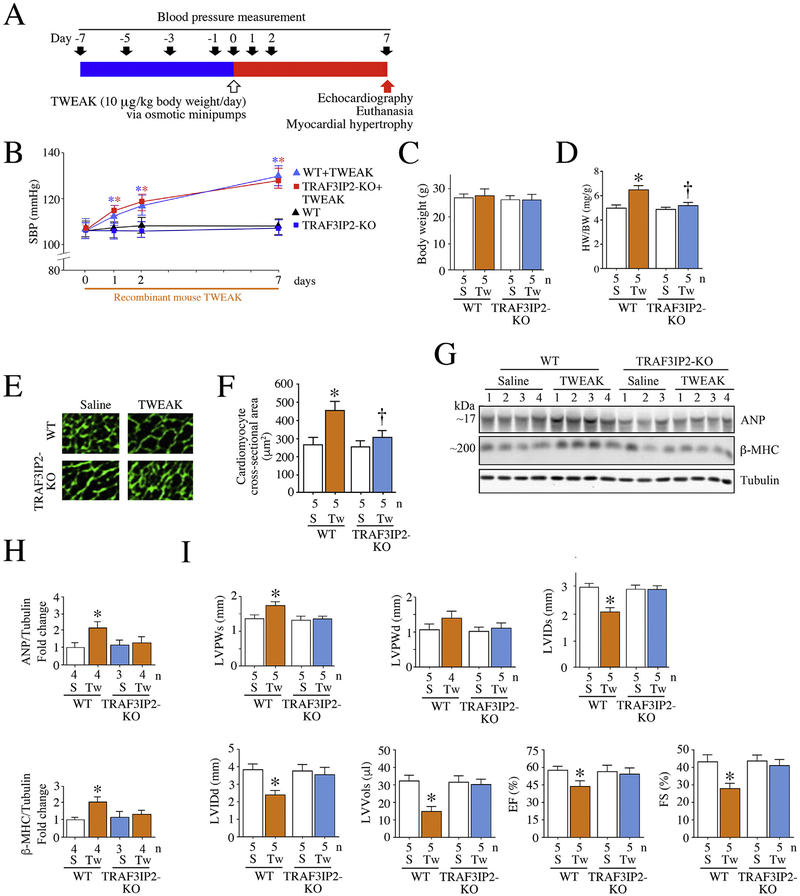Fig. 6.
TRAF3IP2 gene deletion blunts TWEAK-induced myocardial hypertrophy and contractile dysfunction. Both wild type (WT) and homozygous TRAF3IP2 knockout mice (TRAF3IP2-KO) were continuously infused with recombinant mouse TWEAK (10 μg/kg body weight/day) for 7 days via subcutaneously implanted osmotic minipumps (A). Saline-infused animals served as controls. Systolic blood pressure was measured by tail-cuff plethysmography (B). Neither saline nor TWEAK affected body weights (C). However, TWEAK infusion resulted in myocardial hypertrophy, as evidenced by increased heart weight to body weight ratios (D), cardiomyocyte cross-sectional area (WGA staining; E and quantification, F) and ANP mRNA expression (RT-qPCR; G) in WT mice, but not in TRAF3IP2-KO mice. Further, echocardiography revealed myocardial dysfunction in TWEAK-infused WT, but not TRAF3IP2-KO mice (H), as evidenced by significant increases in LVPWs (left ventricular posterior wall thickness during systole), LVPWd (left ventricular posterior wall thickness during diastole), LVIDd (left ventricular internal diameter during diastole), LVVols (left ventricular volume in systole) and EF (percent Ejection Fraction), and reduced LVIDs. B, C, D, F–H, *P < 0.05 versus Saline, †P < 0.05 versus TWEAK (n = 5/group). HW: heart weight, BW: body weight, S: saline; Tw: TWEAK; WT: wild type; TRAF3IP2-KO: homozygous TRAF3IP2 knockout mice.

